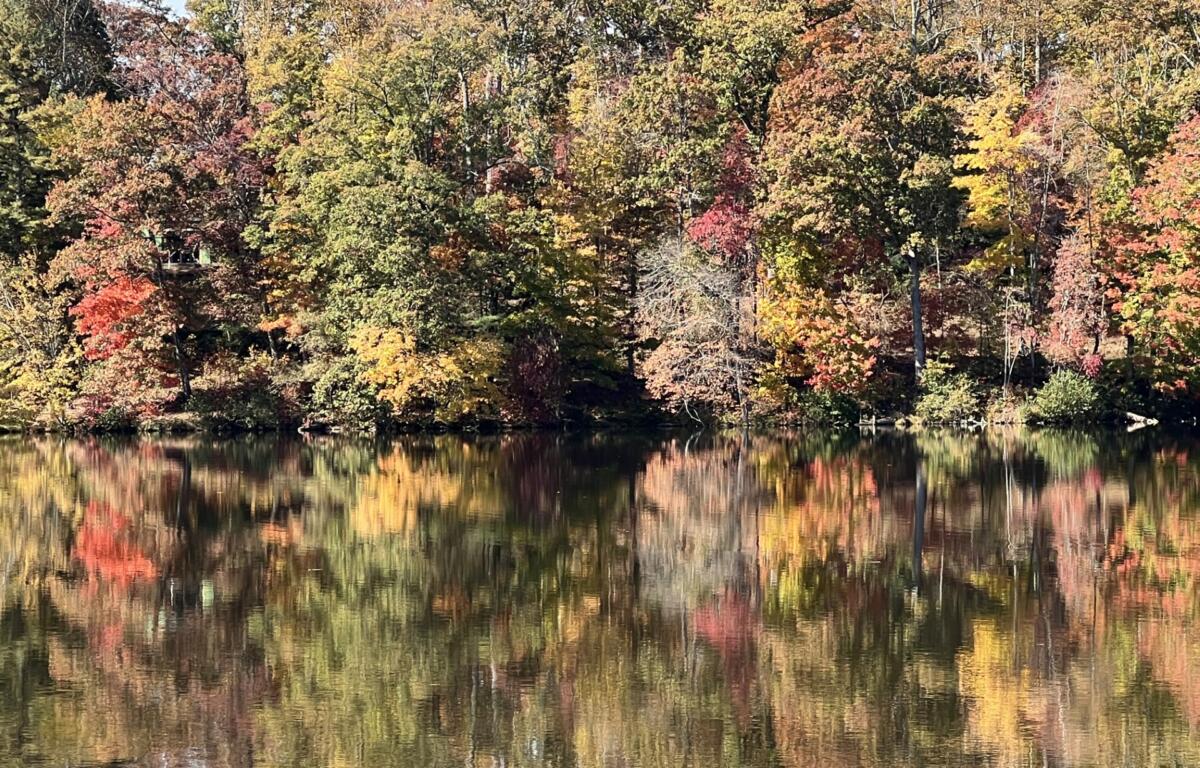ASHEVILLE, N.C. (828newsNOW) — Leaf peepers want to know: “When is peak color in Western North Carolina and will it be good this year?”
The answer to those questions depends on many factors, including altitude and weather.
The kaleidoscope of colors in the mountains and areas surrounding Asheville usually starts in October. It lasts several weeks, with color beginning in the highest altitudes and working down into the valleys and foothills.
“That’s always a topic of conversation this time of year,” UNC Asheville’s Dr. Jonathan Horton, a professor and chair of the school’s Biology Department, said of the changing leaves.
A good news/bad news scenario
Horton said the hot, dry summer could impact this year’s leaf colors.
“The one thing that has me concerned about the fall leaf color prediction for this year is the fact that it’s been so dry. We had, you know, a pretty dry summer, especially hot at the beginning of July and we got a little bit of rain and then it kind of dried up.”
The cooler nights have started, but will it be enough for the vibrant colors leaf peepers want to see?
“A lot of the trees are showing drought stress signs now,” Horton said. “If we don’t get some good rain soon, then the leaf season may be kind of short. I think the leaves will kind of fall faster than they normally would.”
Some tulip, or yellow, polar trees are already going through the cycle.
“They sometimes give a nice like golden yellow color sort of early. But I know I’ve noticed a lot of them are just turning brown and dropping leaves now,” Horton said. “There’s some other trees that are starting to show the same symptoms.”
The problem, he said, is the lack of rain.
“I know we haven’t had any measurable rain in over a week, and it doesn’t look like we’re going to have much until maybe this weekend,” Horton said.
Temperatures, he said, are good, though.
“I think we’re getting into the right range that could start triggering some good leaf color change. But without some rain, leaves might not be as vibrant and the season might be quicker,” Horton said. “I think some of the impact is already there.”
But, if the rain comes, the trees may recover a little bit, he said.
“I think, obviously, it will be much better than if we don’t get any rain. With the weather pattern that we’re starting to get now, that will, hopefully, continue where you get, you know, the warm sunny days and then the cooler nights that is optimal,” Horton said.
That pattern is what trees need, particularly for the really bright red colors.
How the change happens
Photosynthesis is how leaves turn sunlight, water and carbon dioxide into glucose, or plant food, and produce oxygen. Chlorophyll, which is the chemical compound that makes photosynthesis happen, gives leaves their green color, according to the U.S. Forest Service. The green hides the vibrant colors you see in the fall.
Shorter days and colder nights trigger the trees to prepare for winter — photosynthesis shuts down, and chlorophyll fades from the leaves, allowing the reds, yellows and oranges to emerge, the service’s website said.
“With the hot sunny days they’re photosynthesizing a lot,” Horton said. “They’re gaining a lot of carbon and making a lot of sugars in their leaves. “Usually they’ll export the sugars to the rest of the tree, but when the temperature is cool at night, they can’t do that. And so they’ll convert those sugars into a red pigment called anthocyanin that gives leaves that really bright, bright red. That’s really accentuated with warm sunny days and crisp cool nights.”










